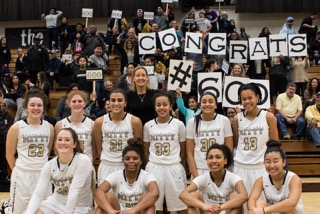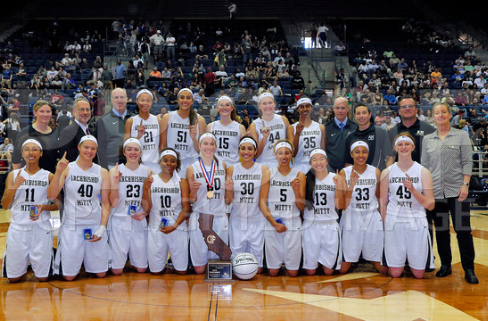For our players, footwork tends to be the fundamental that develops the most rust in the offseason. “Two-ball circle shooting” is a drill we do to teach and/or streamline our players’ face-up footwork. It is a progressive drill of varied shots, while incorporating an array of stationary ball fakes. It is executed with 4 players and 2 basketballs, each taking a turn passing and then shooting. Our progression is as follows:
1) One-foot lay-up (proper hand).
2) Power slide lay-up (one bounce and finish off two feet).
3) Catch and shoot from low block (inside pivot foot and finish off the glass).
4) Catch and shoot off a two-foot jump stop from the elbow.
Our progression continues with stationary ball fakes from the elbow. Our players will catch the ball with a two-foot jump stop, and start each move from a triple threat position:
5) Fake shot drive (direct and crossover).
6) Rocker step or jab and go.
7) Fake drive shot.
8) Step back moves.
When attacking the basket, our players will alternate their finishes with lay-ups, mid-range jumpers, and floaters. “Two-ball circle shooting” will improve your players’ footwork and enhance their scoring versatility.



















